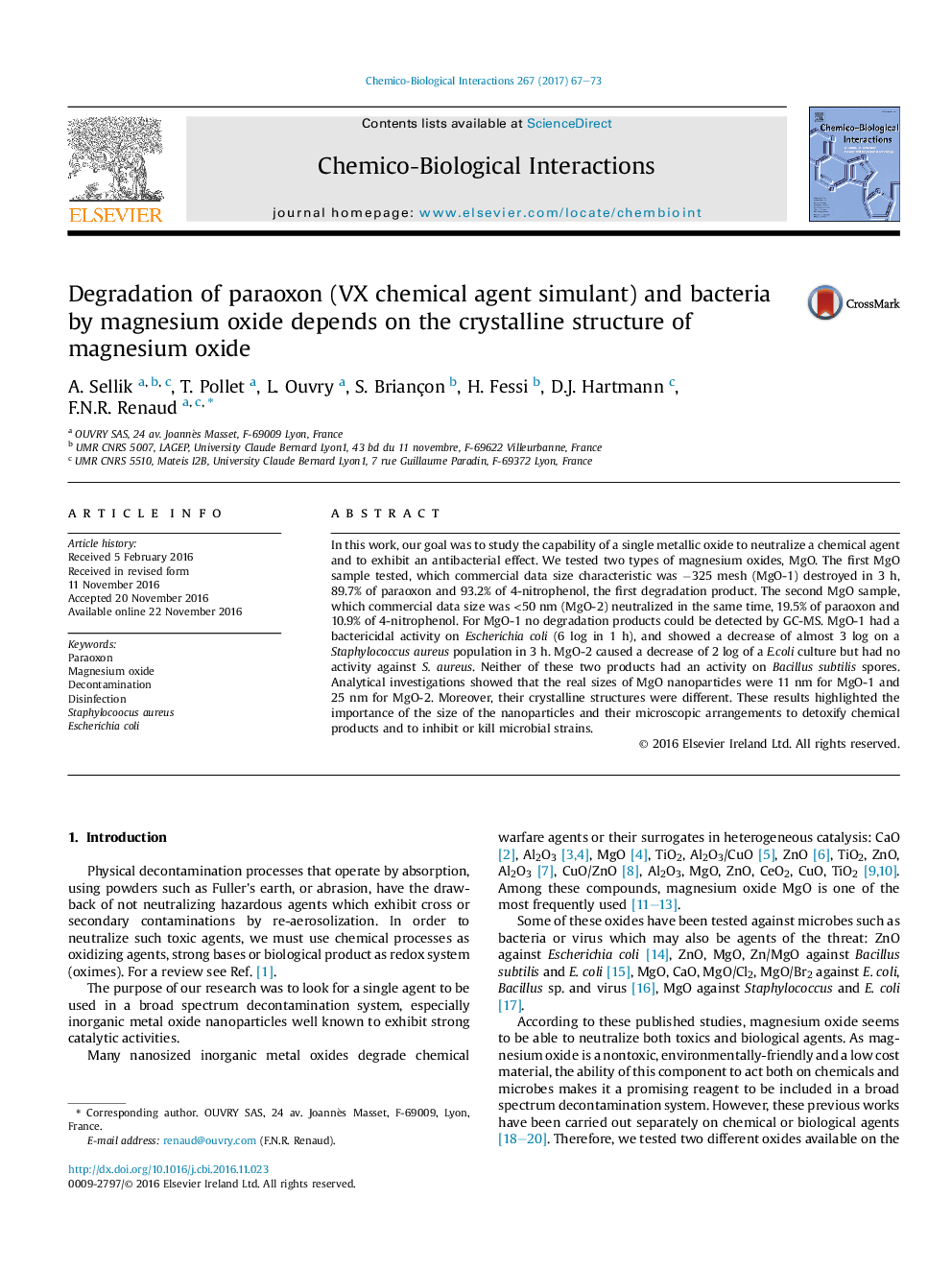| کد مقاله | کد نشریه | سال انتشار | مقاله انگلیسی | نسخه تمام متن |
|---|---|---|---|---|
| 5559370 | 1561575 | 2017 | 7 صفحه PDF | دانلود رایگان |

- A single compound of MgO nanoparticles can neutralize both chemicals and bacteria.
- A single compound of MgO nanoparticles cannot neutralize bacterial spores.
- Active MgO compound size was 11Â nm with arrangement in a sheet.
- By-products were undetectable by the means of GC-MS.
In this work, our goal was to study the capability of a single metallic oxide to neutralize a chemical agent and to exhibit an antibacterial effect. We tested two types of magnesium oxides, MgO. The first MgO sample tested, which commercial data size characteristic was â325 mesh (MgO-1) destroyed in 3 h, 89.7% of paraoxon and 93.2% of 4-nitrophenol, the first degradation product. The second MgO sample, which commercial data size was <50 nm (MgO-2) neutralized in the same time, 19.5% of paraoxon and 10.9% of 4-nitrophenol. For MgO-1 no degradation products could be detected by GC-MS. MgO-1 had a bactericidal activity on Escherichia coli (6 log in 1 h), and showed a decrease of almost 3 log on a Staphylococcus aureus population in 3 h. MgO-2 caused a decrease of 2 log of a E.coli culture but had no activity against S. aureus. Neither of these two products had an activity on Bacillus subtilis spores. Analytical investigations showed that the real sizes of MgO nanoparticles were 11 nm for MgO-1 and 25 nm for MgO-2. Moreover, their crystalline structures were different. These results highlighted the importance of the size of the nanoparticles and their microscopic arrangements to detoxify chemical products and to inhibit or kill microbial strains.
Journal: Chemico-Biological Interactions - Volume 267, 1 April 2017, Pages 67-73